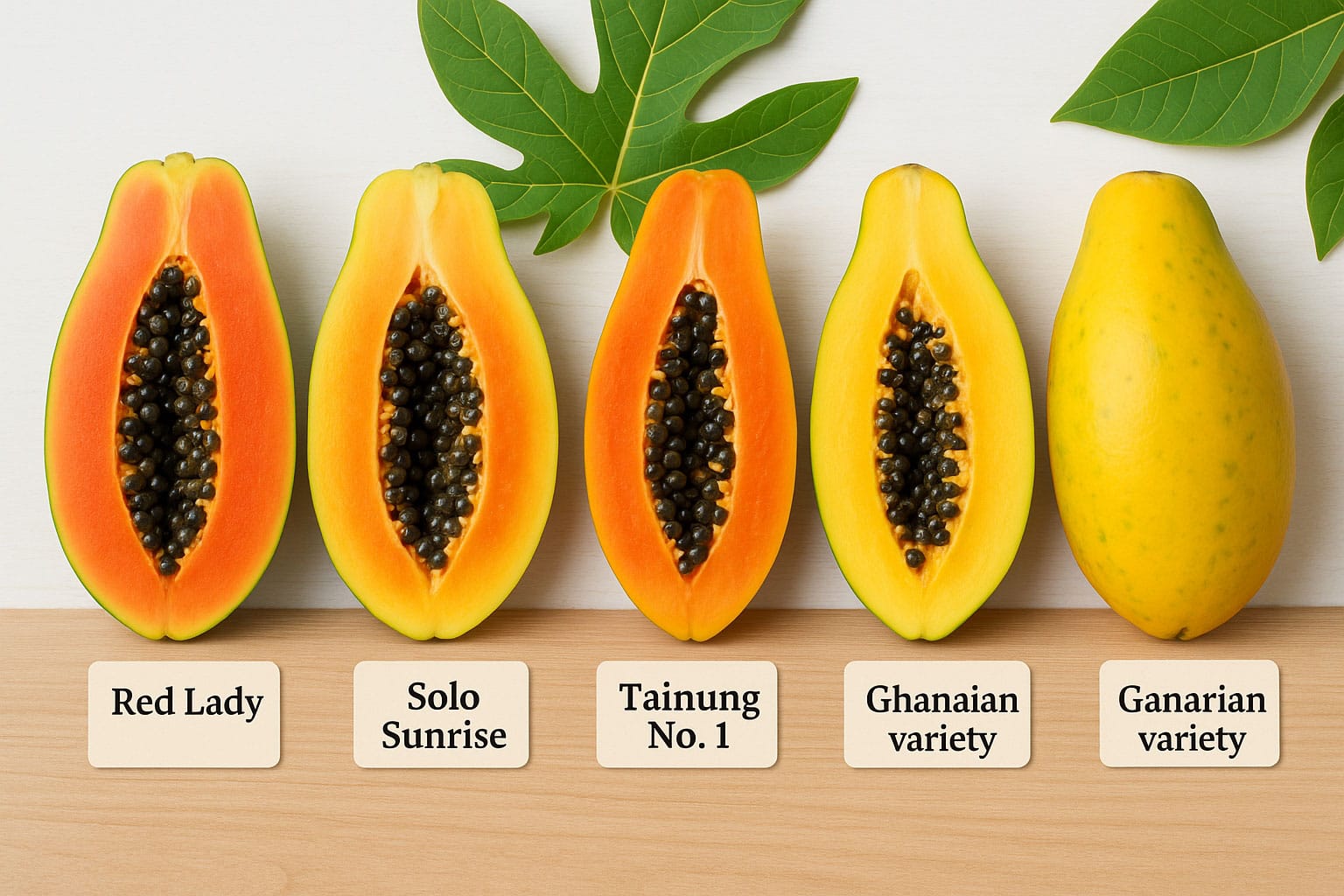INTRODUCTION: Why Papaya Farming is a Game-Changer in Ghana
In 2025, the demand for healthy tropical fruits is growing rapidly both locally and globally. One of the easiest and most profitable fruits to grow in Ghana is pawpaw (papaya). For young people, agribusiness entrepreneurs, and anyone looking for a low-entry, high-reward investment, papaya farming is a great choice.
Papaya grows fast, starts fruiting in 6 to 8 months, and continues producing for up to 2 years. It requires low maintenance and can be cultivated on small plots with big profits. With Ghana’s climate and increasing interest in exports, pawpaw farming offers a sustainable business with income potential for individuals, cooperatives, and agri-startups.

Step 1: What is Papaya and Which Varieties Should You Grow in Ghana?
Papaya (pawpaw) is a tropical fruit with high nutritional and industrial value. It is rich in vitamin C, digestive enzymes like papain, and antioxidants. It is used for:
- Fresh fruit consumption
- Juice, smoothies, and puree
- Dried fruit snacks
- Cosmetics and skincare (papaya extract)
- Papaya seed oil (used in beauty and pharma industries)
Recommended Varieties in Ghana:
| Variety | Origin | Flesh Color | Yield | Export Suitability |
| Red Lady | Taiwan | Reddish-orange | High | Excellent |
| Solo Sunrise | Hawaii | Deep red | Medium | Excellent |
| Local Variety | Ghana | Yellow-orange | Low | Poor (soft, perishable) |
| Tainung No. 1 | Asia | Orange-red | Very High | High |
Ghana Papaya/Pawpaw Images Red Lady Kind
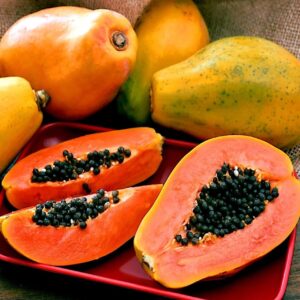

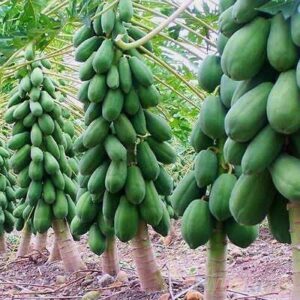
Ghana Papaya/Pawpaw Images Solo Sunrise Kind
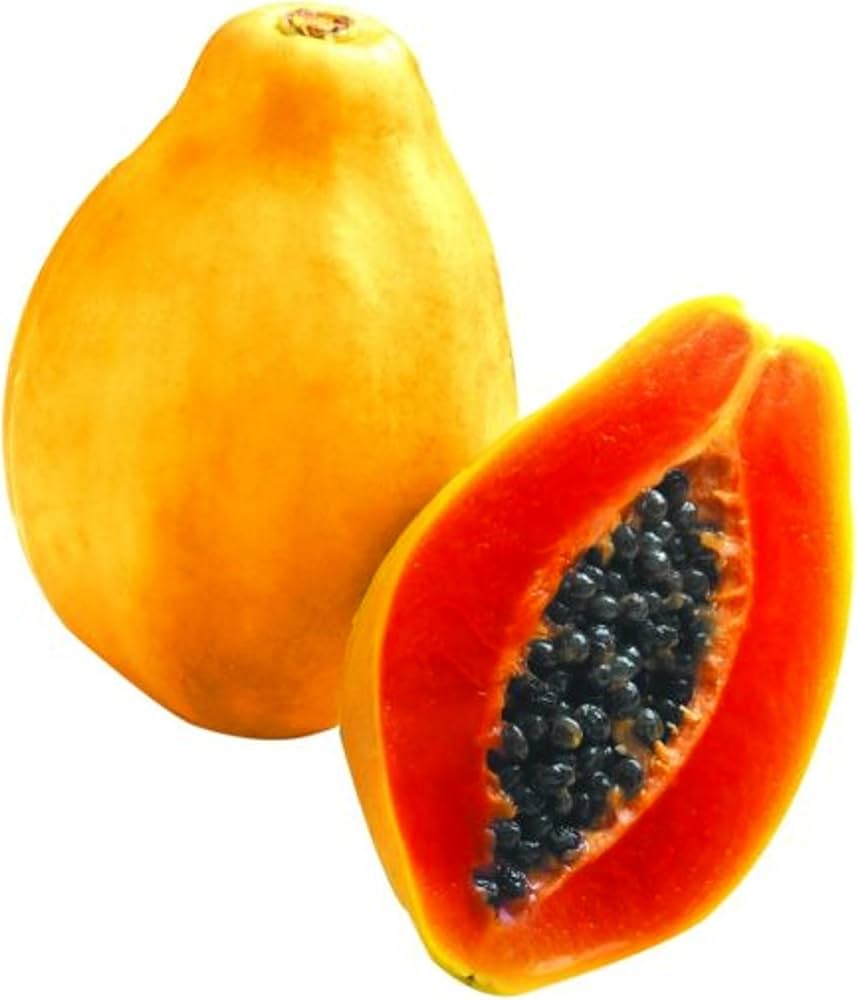


Ghana Papaya/Pawpaw Images Local Variety

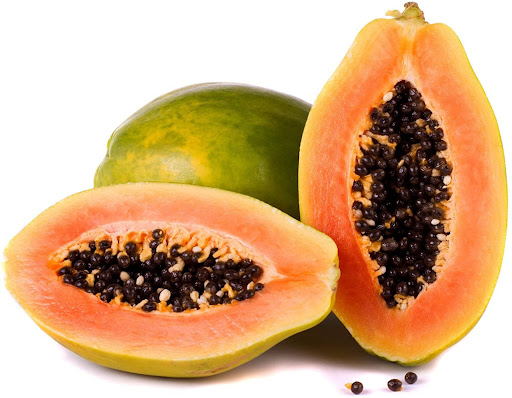
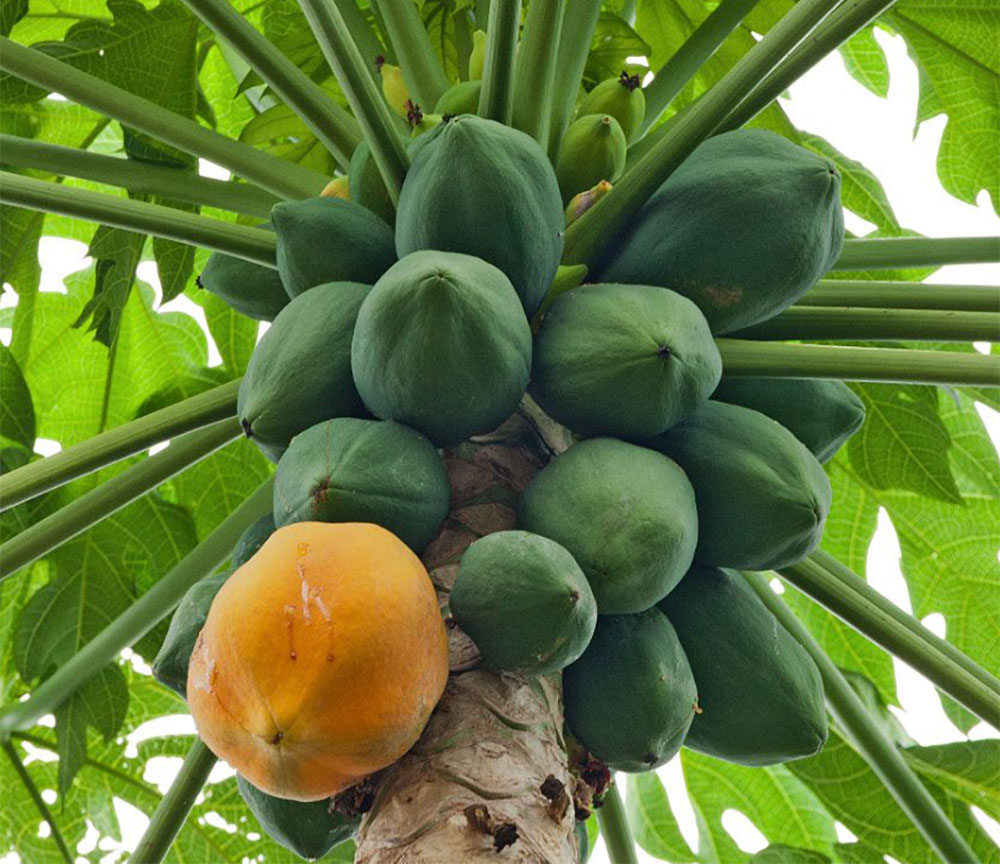
Ghana Papaya/Pawpaw Images Tainung No. 1

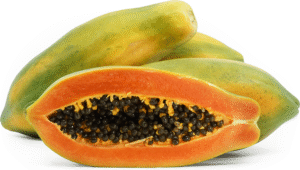
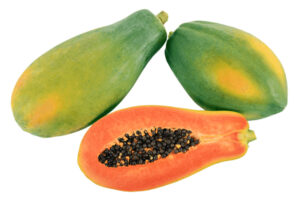
Best Choice: Start with Red Lady or Solo Sunrise for export potential and high yield.
Step 2: Practical Agronomic Guide to starting a papaya farm 1-Acre Papaya Farm
Best Time to Plant in Ghana:
- March-April (Major rainy season)
- September-October (Minor rainy season)
Land Preparation:
- Clear and plough land thoroughly
- Create raised beds if the area floods
- Soil pH should be 5.5 to 6.7 (slightly acidic)
- Add organic compost or poultry manure
Seedling Propagation:
- Use hybrid seeds (Red Lady or Solo Sunrise)
- Germinate in polybags with loamy soil + compost
- Germination takes 1-2 weeks
- Ready for transplant in 4-6 weeks when seedlings are 15-20 cm tall
Spacing:
- 2.5m x 2.5m (approximately 625 plants per acre)
Fertilizer Plan:

- Organic option: Poultry manure every 2-3 months
- Inorganic option:
- 2 weeks after transplanting: NPK 15-15-15 (50g/plant)
- After 2 months: NPK 12-24-12
- Monthly maintenance: Urea and Potassium Nitrate
Irrigation:
- Water 2-3 times weekly in dry season
- Use drip irrigation for cost-efficiency
- Can use borehole, dugout, or poly tanks
Pest & Disease Control:
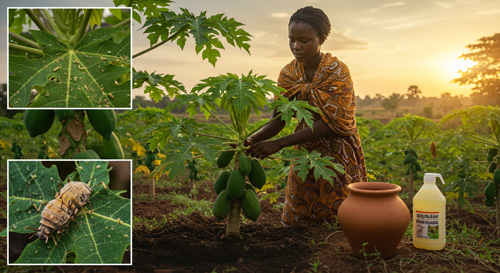
- Aphids, whiteflies: Neem oil, soapy water
- Powdery mildew: Sulphur-based fungicide
- Root rot: Avoid waterlogging
- Practice crop rotation, mulching, and remove infected plants
Fruiting & Harvest:
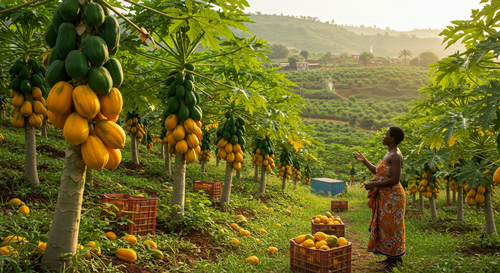
- First harvest: 6 to 8 months after planting
- Harvest weekly for up to 18-24 months
- Yield: 30-60 tons per acre/year (1 tree = 50-100 fruits)
Step 3: Cost & Profit Projection for 1 Acre in Ghana (2025 Estimates)
| Expense Item | Estimated Cost (GHS) |
| Land clearing & ploughing | 1,200 |
| Hybrid seeds (Red Lady 625 pcs) | 800 |
| Nursery & polybags | 600 |
| Manure & fertilizers | 1,500 |
| Irrigation setup | 3,000 |
| Pest & disease control | 500 |
| Labor (3-6 months) | 2,500 |
| Miscellaneous (transport, tools) | 900 |
| Total Estimated Cost | 11,000 GHS |
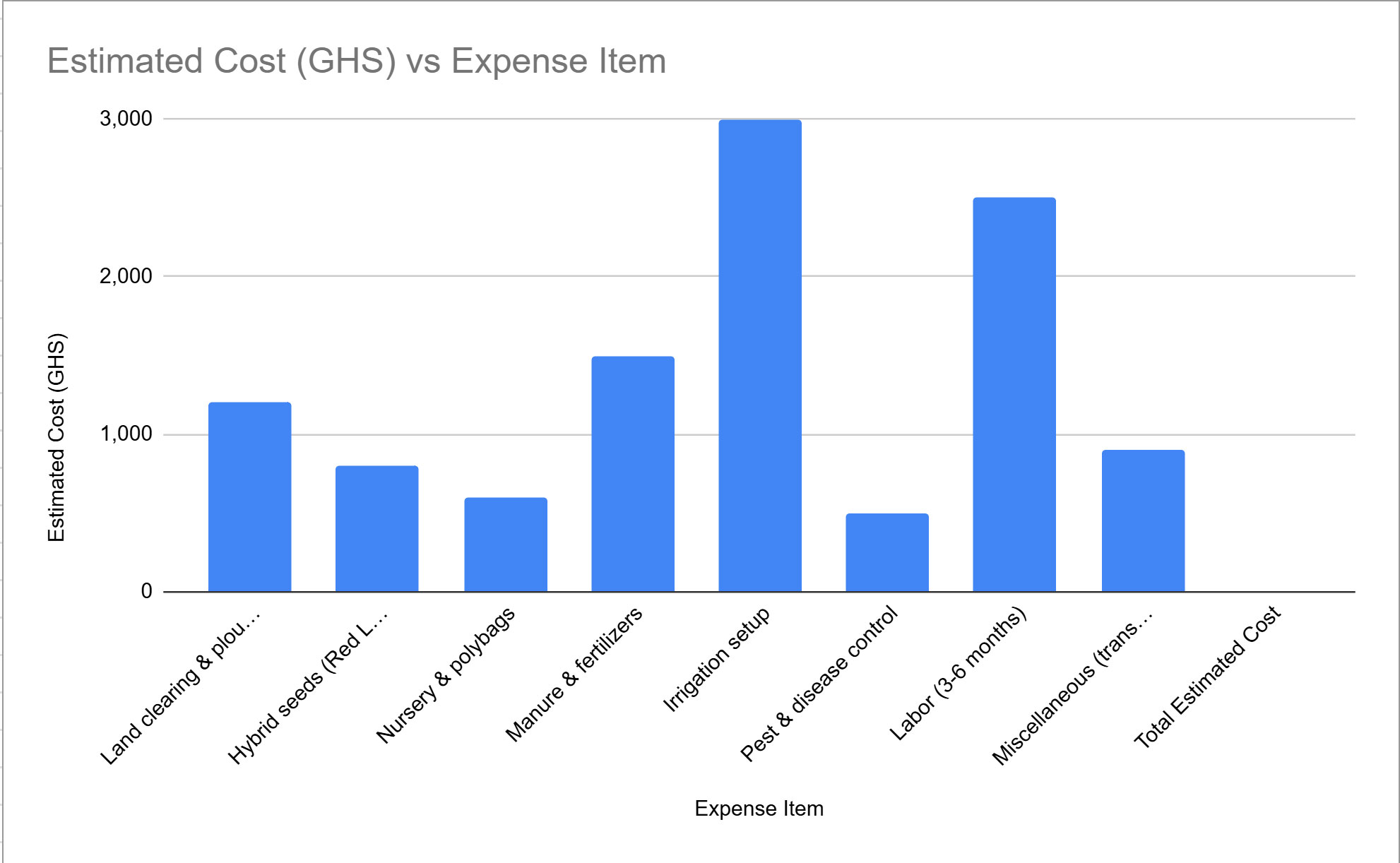
Revenue Projection:
- Avg. yield: 40 tons/acre/year
- Price: GHS 2.5/kg (local market), GHS 5/kg (export-ready)
- Gross Income (local): GHS 100,000
- Gross Income (export): GHS 200,000
Net Profit:
- Local Market: ~GHS 89,000
- Export Market: ~GHS 179,000
- Break-even: Within 1 harvest cycle (~9-10 months)
Step 4: Market Demand & Export Opportunities
Local Demand:
- Strong in urban markets (Accra, Kumasi, Takoradi)
- Hotels, supermarkets, juice companies
- School feeding and hospitals
value addition papaya:
- Dried pawpaw slices
- Papaya juice and puree
- Skincare (papain cream, exfoliants)
- Papaya seed oil
Export Opportunities:
- High demand in EU, Middle East, UK, and Canada
- Ghana already exports pawpaw via air freight
- Requirements:
- GLOBALG.A.P certification
- Phytosanitary certificate
- Good post-harvest handling (cold chain)
Buyers/Exporters in Ghana:
- HPW Fresh & Dry Ltd (Eastern Region)
- Blue Skies Ghana
- Eden Tree Ghana
- Local aggregators and agents in Accra & Tema
Step 5: SWOT Analysis of Papaya papaya farming in Ghana Ghana
| Strengths | Weaknesses |
| Fast-growing, early returns | Sensitive to waterlogging |
| High market demand | Susceptible to diseases |
| Low start-up capital | Perishable without cold storage |
| High export potential | Certification can be expensive |
| Opportunities | Threats |
| Export markets | Price fluctuations |
| Local juice and cosmetics | Climate shocks (droughts/floods) |
| Contract farming | Pests and post-harvest losses |
Step 6: Risk Management & Success Tips
Climate Risk:
- Use mulching, windbreaks, and water harvesting
- Invest in borehole or small dam for irrigation
Pest/Disease:
- Train workers on early detection
- Apply neem-based organic pesticides regularly
Post-Harvest Loss:
- Harvest early morning
- Use shaded packaging areas
- Sell to processors or install cold storage if possible
Financial Access:
- Partner with Agribusiness Hubs or MOFA
- Apply for grants or loans (NEIP, YEA, Masloc)
Logistics:
- Collaborate with farmer cooperatives
- Use tricycles or aggregators to access markets
Step 7: Starting With No Experience — The Best Model
Practical Tips:
- Start with 1 acre and Red Lady variety
- Join a cooperative or network like “Ghana Young Farmers”
- Visit successful farms like HPW Dry Ltd for field learning
- Attend a MOFA or GRATIS Foundation training
Low-Risk Models:
- Outgrower Scheme: Partner with an exporter
- Contract Farming: Sell in advance at agreed price
- Backyard Model: Start with 100 trees for testing
Technology to Use:
- WhatsApp for farmer groups
- YouTube for training
- Farm ERP apps (e.g. AgroCenta, Tulaa) for records
Step 8: Optimizing Your 1 Acre for Maximum Profit
Land Use Strategy:
| Space Use | Description |
| 625 Trees | Main pawpaw crop (2.5m spacing) |
| Intercrop | Beans, cassava, okra (3-month crops) |
| Water tank area | Use 1 corner for 3,000L tank and drip lines |
| Compost pit | Recycle plant waste for fertilizer |
Scaling Strategy:
- Year 1: 1 acre
- Year 2: Expand to 3 acres with profit
- Year 3-4: Join/export through aggregator or set up small processing plant
CONCLUSION: Let Your Pawpaw Dream Begin
Papaya farming in Ghana is no longer a backyard idea—it’s a powerful, scalable business opportunity. With the right seed, planning, care, and market strategy, even a beginner can build a profitable agribusiness from just 1 acre. Whether you dream of selling in Accra or exporting to Dubai, the steps are now clear.
Start small. Learn fast. Grow big.

